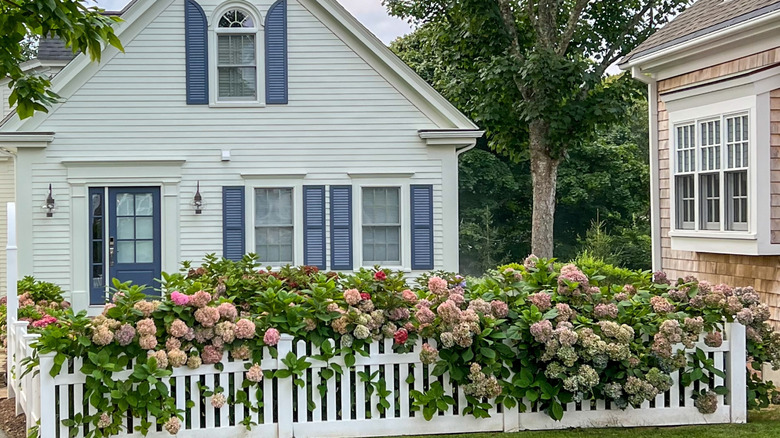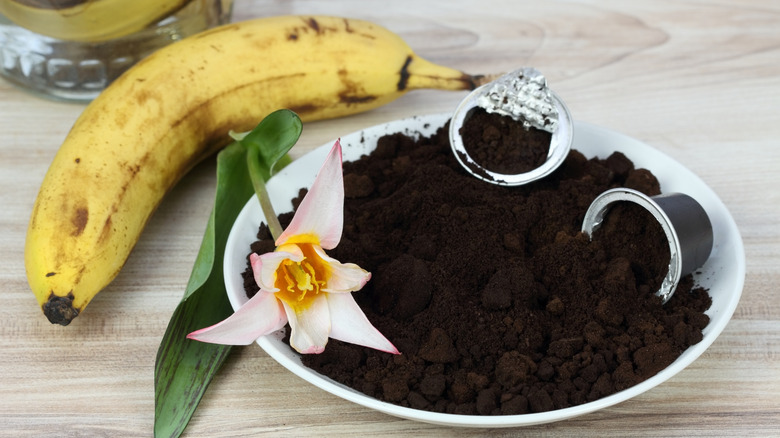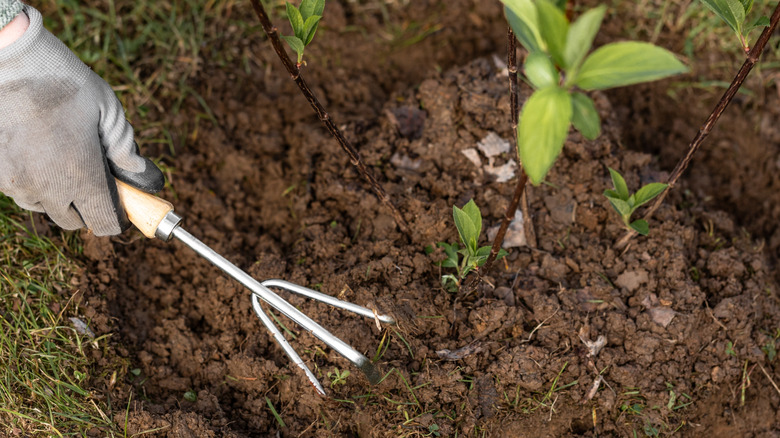Coffee Grounds Vs. Bananas- Which Is Better For Fertilizing Hydrangea Plants
The key to a beautiful garden might be hiding in an unusual place — your kitchen trash can. While it might make sense to add organic waste like coffee grounds and bananas to a compost pile, perhaps you should consider adding them directly to the soil, especially if you're growing hydrangeas. While bananas may have some value as plant food, coffee is likely the better low-cost amendment worth adding to your gardening tool kit, at least where hydrangeas are concerned.
Some gardeners praise the benefits of bananas for garden fertilizer, while others prefer coffee grounds. When it comes to using either option for successful hydrangea blooms, one might work better than the other. Since the hydrangea bloom color is influenced by the pH of the soil the plant grows in, gardeners sometimes tinker with the acidity in an attempt to produce their preferred hue. Soil with an alkaline pH will tinge the hydrangea's flowers pink, but as the soil grows more acidic, the flowers will transition to purple, then blue. Between bananas and coffee grounds, the used grounds from your morning coffee will have a greater influence on the flowers' color, since coffee shifts the soil into the acidic range. But which is better for the plant's overall health?
Compare and contrast: coffee or bananas for hydrangea health
You've finished eating a banana and set aside the peel. You could dispose of it in your compost pile, but perhaps it would be better used directly on your hydrangea's soil. Potassium is a beneficial mineral for you and for your plants. Gardeners have tried to extract the potassium bananas famously contain by burying peels in their gardens or brewing a fertilizer tea with the leftovers of their afternoon snack. However, since fresh banana peels are over 80 percent water, they don't contain enough potassium to really benefit your plants. Plus, rotting peels might attract pests to your garden. Composting them is likely the better option.
Coffee grounds, on the other hand, are quite useful as a fertilizer. Hydrangeas are hardy plants, but they require certain nutrients to thrive — and they could be provided by coffee grounds. When added to the soil around a hydrangea plant, coffee grounds may serve as a slow-release fertilizer that enriches the soil with nitrogen, phosphorus, and potassium. They can also loosen compacted soil and increase moisture retention. As coffee grounds decompose, they encourage the growth of beneficial microorganisms, boosting the soil ecosystem. They also serve as a way to make your soil more acidic, improving the health of your garden and, as mentioned, potentially modifying the color of your hydrangea's blooms.
Using coffee grounds to fertilize your hydrangeas
While growing and taking care of hydrangeas might seem difficult, they are low maintenance plants and shouldn't need too much intervention. As an additive to soil, coffee grounds can provide some necessary nutrients to help your blooms thrive and perhaps even influence their color.
However, don't just dump the grounds from your coffee machine onto your soil. That won't do much for your plants, nor will it help if you're hoping to improve the structure of your soil. To improve drainage and moisture retention, mix the grounds with your soil, adding in other amendments to give the soil a holistic boost. You can sprinkle the grounds directly on the soil if you're looking to take advantage of coffee grounds' natural pest repellant properties, as the caffeine content deters slugs and snails. Like bananas, coffee grounds also work great in your compost heap, and they can even prevent the pile from fully decomposing. Used grounds are best for plant health, but if you want to take advantage of coffee's acidic properties, fresh grounds will modify the pH of your soil more—just be careful not to use too much.


